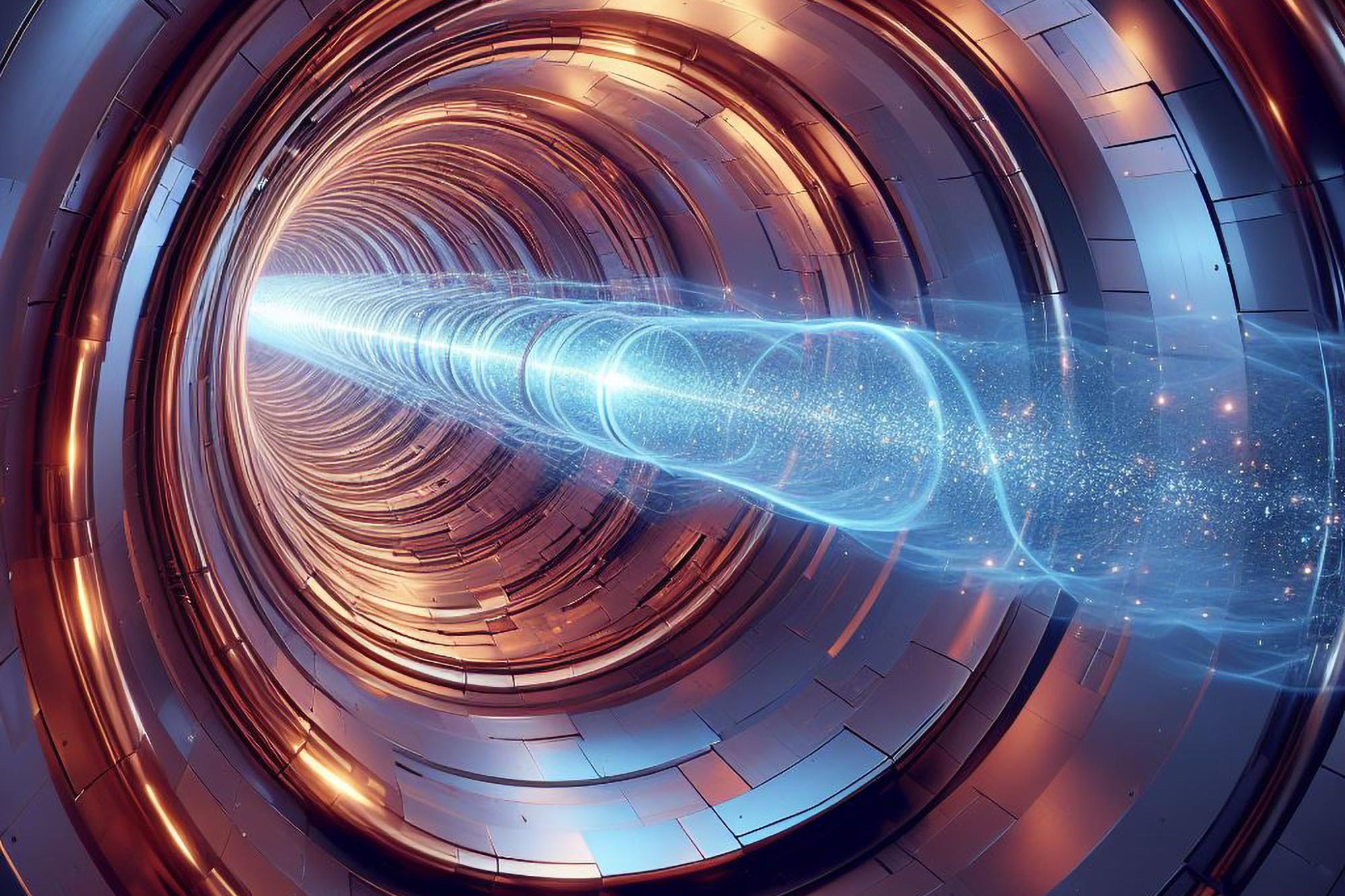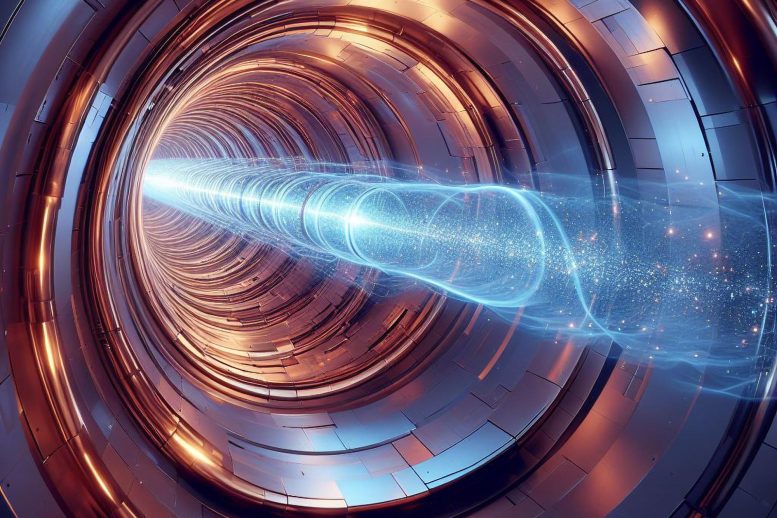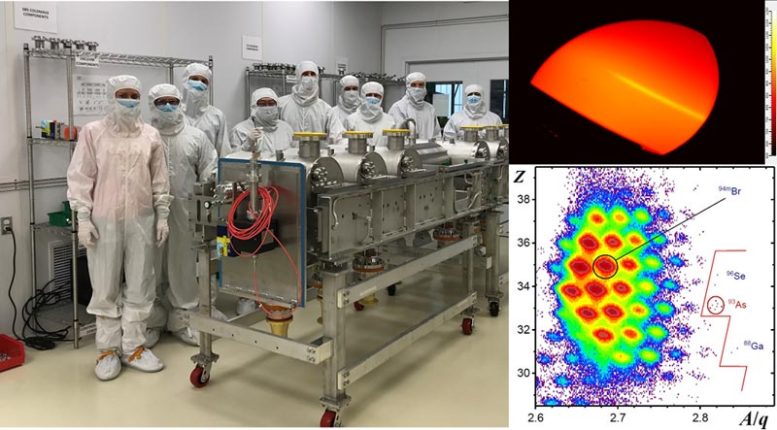

At the Facility for Rare Isotope Beams, a major advancement has been achieved with the successful acceleration of a high-power uranium beam, achieving an unprecedented 10.4 kilowatts of continuous beam power.
This achievement not only highlights the difficulty in handling uranium but underscores its importance in generating a diverse range of isotopes for scientific study. The high-power beam led to the discovery of three new isotopes within the first eight hours of its operation, marking a significant breakthrough in nuclear science and expanding our understanding of the nuclear landscape.
Breakthrough in Isotope Research
Scientists and engineers at the Facility for Rare Isotope Beams (FRIB) have achieved a significant milestone in isotope research by accelerating a high-power beam of uranium ions to deliver a record-setting 10.4 kilowatts of continuous beam power to a target. Uranium, known as the most challenging element to accelerate, plays a crucial role in scientific research. According to the National Academy of Sciences and the Nuclear Science Advisory Committee, more than half of the top 17 priority scientific programs that utilize rare isotope beams depend on a primary beam of uranium. This is due to uranium’s ability to produce a diverse array of isotopes through fragmentation or fission.
The successful acceleration of a uranium beam to unprecedented power levels marks a pivotal moment for FRIB. This breakthrough not only paves the way for new research avenues with rare isotopes but also, within the first eight hours of operation, enabled the identification of three previously unknown isotopes: gallium-88, arsenic-93, and selenium-96. Achieving this required the stable operation of all accelerator components at optimal accelerating gradients. This milestone lays the groundwork for the generation of the heaviest ion beams for creating rare isotopes. It also expands our scientific exploration into previously untapped areas of the nuclear landscape.

Pioneering Acceleration Techniques and New Isotope Discovery
The accelerator facility at FRIB produced the highest-power accelerated continuous wave uranium beam ever seen, leading to the separation and identification of three previously unknown isotopes. This achievement was possible thanks to the successful operation of FRIB, including a new superconducting linear accelerator composed of 324 resonators in 46 cryomodules, a newly developed liquid-lithium stripper, and novel technologies such as uranium production in the Electron Cyclotron Resonance (ECR) ion source, the unique heavy-ion Radio-Frequency Quadrupole (RFQ), the high-power target and beam dump.
Researchers developed new techniques to set up the simultaneous acceleration of three charge states of uranium after stripping with liquid-lithium film. This approach achieved the record-high power for uranium. The three previously unobserved isotopes — gallium-88, arsenic-83, and selenium-96—were produced in a 1.2 mm graphite target, separated, and identified for the first time in the Advanced Rare Isotope Separator at FRIB. This work was performed in collaboration with scientists from the United States, Japan, and South Korea.
References:
“Acceleration of uranium beam to record power of 10.4 kW and observation of new isotopes at Facility for Rare Isotope Beams” by 17 June 2024, Physical Review Accelerators and Beams.
DOI: 10.1103/PhysRevAccelBeams.27.060101
“FRIB Transition to User Operations, Power Ramp Up, and Upgrade Perspectives” by J. Wei, H. Ao, B. Arend, S. Beher, G. Bollen, N.K. Bultman, F. Casagrande, W. Chang, Y. Choi, S. Cogan, C. Compton, M. Cortesi, J.C. Curtin, K.D. Davidson, X.J. Du, K. Elliott, B. Ewert, A. Facco, A. Fila, K. Fukushima, V. Ganni, A. Ganshyn, T.N. Ginter, T. Glasmacher, J.-W. Guo, Y. Hao, W. Hartung, N.M. Hasan, M. Hausmann, K. Holland, H.-C. Hseuh, M. Ikegami, D.D. Jager, S. Jones, N. Joseph, T. Kanemura, S.H. Kim, C. Knowles, T. Konomi, B.R. Kortum, E. Kwan, T. Lange, M. Larmann, T.L. Larter, K. Laturkar, R.E. Laxdal, J. LeTourneau, Z. Li, S.M. Lidia, G. Machicoane, C. Magsig, P.E. Manwiller, F. Marti, T. Maruta, E.S. Metzgar, S.J. Miller, Y. Momozaki, D.G. Morris, M. Mugerian, I.N. Nesterenko, C. Nguyen, P.N. Ostroumov, M.S. Patil, A.S. Plastun, L. Popielarski, M. Portillo, J. Priller, X. Rao, M.A. Reaume, K. Saito, B.M. Sherrill, M.K. Smith, J. Song, M. Steiner, A. Stolz, O. Tarasov, B.P. Tousignant, R. Walker, X. Wang, J.D. Wenstrom, G. West, K. Witgen, M. Wright, T. Xu, Y. Yamazaki, T. Zhang, Q. Zhao, S. Zhao, K. Hosoyama, P. Hurh, M.P. Kelly, Y. Momozaki, R.E. Laxdal, S.O. Prestemon and M. Wiseman, 19 July 2023, Journals of Accelerator Conferences Website (JACoW).
DOI: 10.18429/JACoW-SRF2023-MOIAA01
This material is based on work supported by the Department of Energy Office of Science, Office of Nuclear Physics, the National Science Foundation, and the Institute for Basic Science in South Korea.